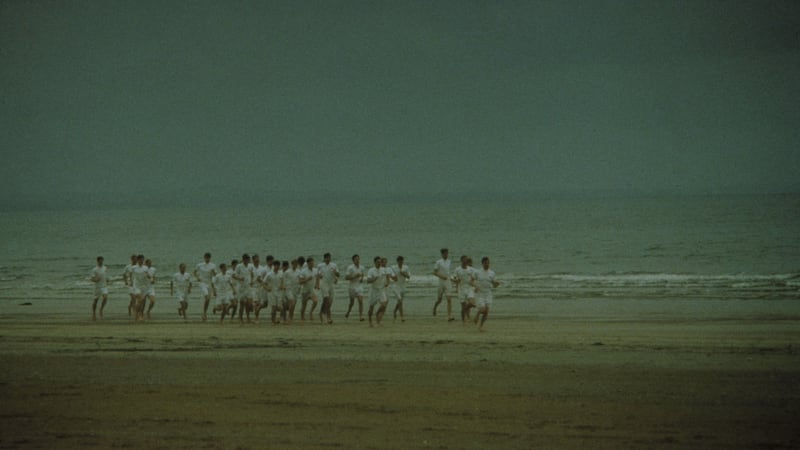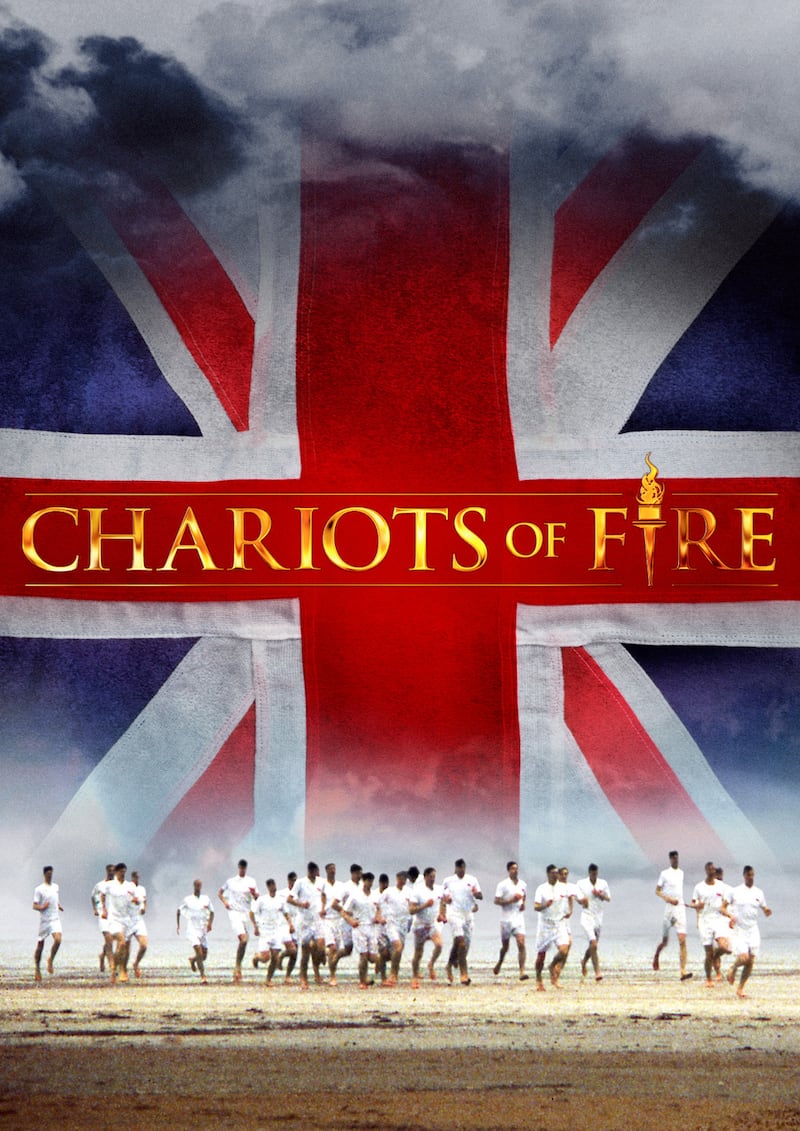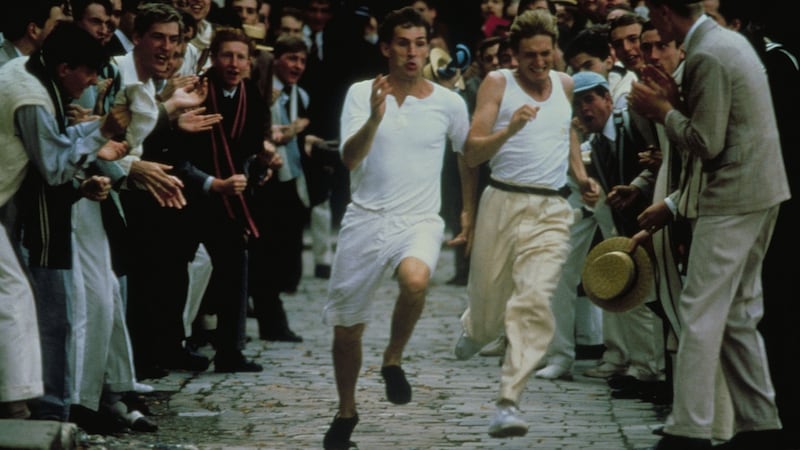It gently fades from the 1978 funeral service for Harold Abrahams, and the interior of a church in London, where one of his fellow Olympians of 1924 remembers "those few young men, with hope in our hearts, and wings on our heels", and cuts to a slow-motion exterior shot of those same young men running barefoot along a wide, open beach, sand splashing from the shallow shore on to their all-white uniforms, their expressions of hope and pure elation in tune with each stride.
And creeping up behind them it seems is that opening anthem of a tune, the first hum of the synthesiser and low drum machine and then softly touched piano keys, played out as if mimicking the perfect slow-motion action of running and the sheer pleasure that comes with it.
Is there a better opening sequence in the history of cinema and the genre of sporting drama? Perhaps so. Is there a better opening sequence in a film about running and what it possibly all means than Chariots of Fire? Definitely not.
The truth is most runners have their own opinion about Chariots of Fire and whether or not it holds up as the best film ever made about that simple act of putting one foot in front of the other as quickly as possible over the permitted distance. For a few years after its release, in the summer of 1981, beginning from when my older brother recorded that opening anthem from the BBC television premiere on to an audio cassette, we as teenagers often acted out that opening sequence on Banna Beach in Co Kerry or on Trá Mór on the Aran Islands, usually breaking off into the flying sprint finish that was the trademark of both Abrahams and Eric Liddell.

There was a period around that time too when even as runners it wasn't particularly cool to say you loved Chariots of Fire. That beach running scene is still acted out by many along the West Sands at St Andrew's in Scotland, adjacent to the Old Course. So too is the Trinity Great Court run at Cambridge University. And while that original anthem by Vangelis has yet to be beaten by any running tune, of course the film is very, very British. Truth is that doesn't matter in the slightest.
Last November, the film's producer David Puttnam got a phone call at his home in Skibbereen in west Cork from someone in the White House transition team with a tip-off that said: "We just thought you'd like to know that he's referenced it again."
‘Eagle’s wings’
Him being Joe Biden, who would again give Chariots of Fire a gentle nod in his first address as president-elect. "Now, together, on eagle's wings," Biden told the crowd in Delaware, "we embark on the work that God and history have called us to do."
That in turn was a gentle nod to the line, via Isaiah 40, which Liddell delivers in one of his sermons early in the film: “They that wait upon the Lord . . . shall mount up with wings as eagles.”
Biden had in fact first cited Chariots of Fire as his favourite film during the vice-presidential race in 2008. “The truth of the matter is the thing about it, there is a place where someone put personal fame and glory behind principles, that to me, is the mark of real heroism, when someone would do that,” he told television network CBS.
“I think the favourite scene is when he [Liddell] is making the decision . . . about do I do this? What do I do? He so desperately wanted to run, but concluded he couldn’t . . . I also like the scene on the beach where, you know, he’s just running.”
That point is entirely agreeable (the film was a favourite too of Ronald Reagan, by the way) because whatever else the film might represent – that central tale of Abrahams and Liddell, two runners of different backgrounds and motivations, one considered British-Jewish, the other Scottish-Protestant, sharing only the same lofty ambition and aspiration – it is those running scenes, both in training and competition, that are as well represented as anything in the history of cinema.
Chariots of Fire was first released 40 years ago this summer, and while most of the running scenes may be more perceptively compelling than you remember, so too is the acting. In the lead role as Abrahams was Ben Cross (whose mother was Irish), who died just last summer. The part of Liddell was also beautifully played by Ian Charleson, who nine years after the making of the film died of an Aids-related illness.
Detailed research
The film was first conceived by Puttnam while he was holed up with the flu in a rented house in Los Angeles and chanced upon Liddell's story in an Olympic reference book. He was looking for a story along the lines of A Man for All Seasons, or someone who follows his conscience, and chose Hugh Hudson to direct, an old colleague from advertising and documentary film-making, who had also been second-unit director on Puttnam's Midnight Express from 1978.
Screenwriter Colin Welland, also commissioned by Puttnam, did some detailed research into both the characters and those 1924 Olympics in Paris, and while the film occasionally flashes its artistic and especially dramatic licence, at times wonderfully corny, the truth is at the heart of it. Or as Puttnam later said in his Oscar-winning speech: "This is a fairy story and you like fairy stories to come true."
While Abrahams also has to battle anti-Semitism, Liddell has to battle his conscience. He was indeed a devout Christian, and did withdraw from the 100 metres because he would not run on a Sunday, only unlike his film portrayal, he had doubts about that decision right up to the end: should he still run to win the 100m, perhaps that is what God would have wanted? Only he didn’t find that out for the first time when boarding the boat for Paris; in fact, he learned some six months in advance, long before the switch to the 400m, where he did win gold.

Indeed it wasn't even Abrahams who raced around the great courtyard at Trinity College at Cambridge (it was Lord Burghley). That scene was also shot at Eton College, as Cambridge, to their lasting regret, didn't allow it to be shot there at the time. His winning of the 100m in 1924 is certainly factually accurate, although that wasn't a race of truth after his failure in the 200m – the 100m, in fact, preceded the 200m in real life.
The Lord Andrew "Lindsay" character, loosely based on that storied Lord Burghley and also of 1924 Olympic 800m gold medallist Douglas Lowe (who declined to have anything to do with the film), is exuberantly performed by Nigel Havers, especially when setting up the Trinity Great Court run against Abrahams and in that classic training session on his estate: the hurdles lined up, a glass full of champagne placed on each one, him clearing them all, although not without spilling a drop.
Later, when they all make it to the 1924 Olympics in Paris, Lord Lindsay, still gleeful about the whole thing, is loyally cheered on as he lines up for the 400m hurdles, after which he turns away to face his fellow combatants and the daunting, open track ahead of him.
Essence of sport
We all remember what happens next, but that scene brilliantly encapsulates the essence of any sporting occasion: behind all the talk and the hoopla and all the good luck comes the lonesome realisation that you’re the one who has to run the race, and the sometimes crippling responsibility that comes with it.
Soon after that scene, Abrahams is found in a quiet dressing room with his team-mate Aubrey Montague, ahead of his 100m final showdown, where he tells him: "And now in one hour's time, I will be out there again. I will raise my eyes and look down that corridor; 4ft wide, with 10 lonely seconds to justify my existence. But will I? I've known the fear of losing but now I am almost too frightened to win."
The film was critically acclaimed on its release in May 1981 and was later nominated for seven Oscars at the 34th Academy Awards, winning four including best picture, best original screenplay, best costume design, and best original score for that powerful, moving original soundtrack by Vangelis, the Greek composer whose unique sound was already familiar to Puttnam and Hudson ( whose father was a runner, by the way).
Indeed after Puttnam's success with Midnight Express, this would be a joint British-American production, which meant the inclusion of some American actors. Their top sprinter Charley Paddock was played by Dennis Christopher, fresh out of Breaking Away, definitely one of the best ever films about cycling.
Charleson was particularly moved by playing the part of Liddell, studying the Bible intensively in preparation for the role. He convinced Hudson and Puttnam to let him write Liddell's speech to the post-race workingmen's crowd at the Scotland versus Ireland races, the year before Paris. "I have no formula for winning the race," he tells his open-air audience. "Everyone runs in her own way or his own way. And where does the power come from to see the race to its end? From within. Jesus said, 'Behold, the Kingdom of God is within you. If with all your hearts, you truly seek me, you shall ever surely find me.' If you commit yourself to the love of Christ, then that is how you run a straight race."

One of the reasons the running scenes are so convincing is because the athletics consultant on the film was Tom McNab, British Coach of the Year 1992 and part of the British national decathlon programme which produced Daley Thompson, who put Charleson and Cross and the rest of the cast through a strict pre-shoot training programme, and it shows.
In 2012, ahead of the London Olympics, Hudson also co-produced a stage edition of Chariots of Fire, saying at the time: “Issues of faith, of refusal to compromise, standing up for one’s beliefs, achieving something for the sake of it, with passion, and not just for fame or financial gain, are even more vital today.”
The title was inspired by the line "Bring me my chariot of fire!" from the William Blake poem, adapted into the British hymn Jerusalem, which is heard at the end of the film as it gently fades back again to that 1978 funeral service for Abrahams and from there, back to a slow-motion replay of the same scene of those few young men running barefoot along a wide, open beach.
Is there a better closing sequence in a film about running and what it possibly all means? Definitely not.












